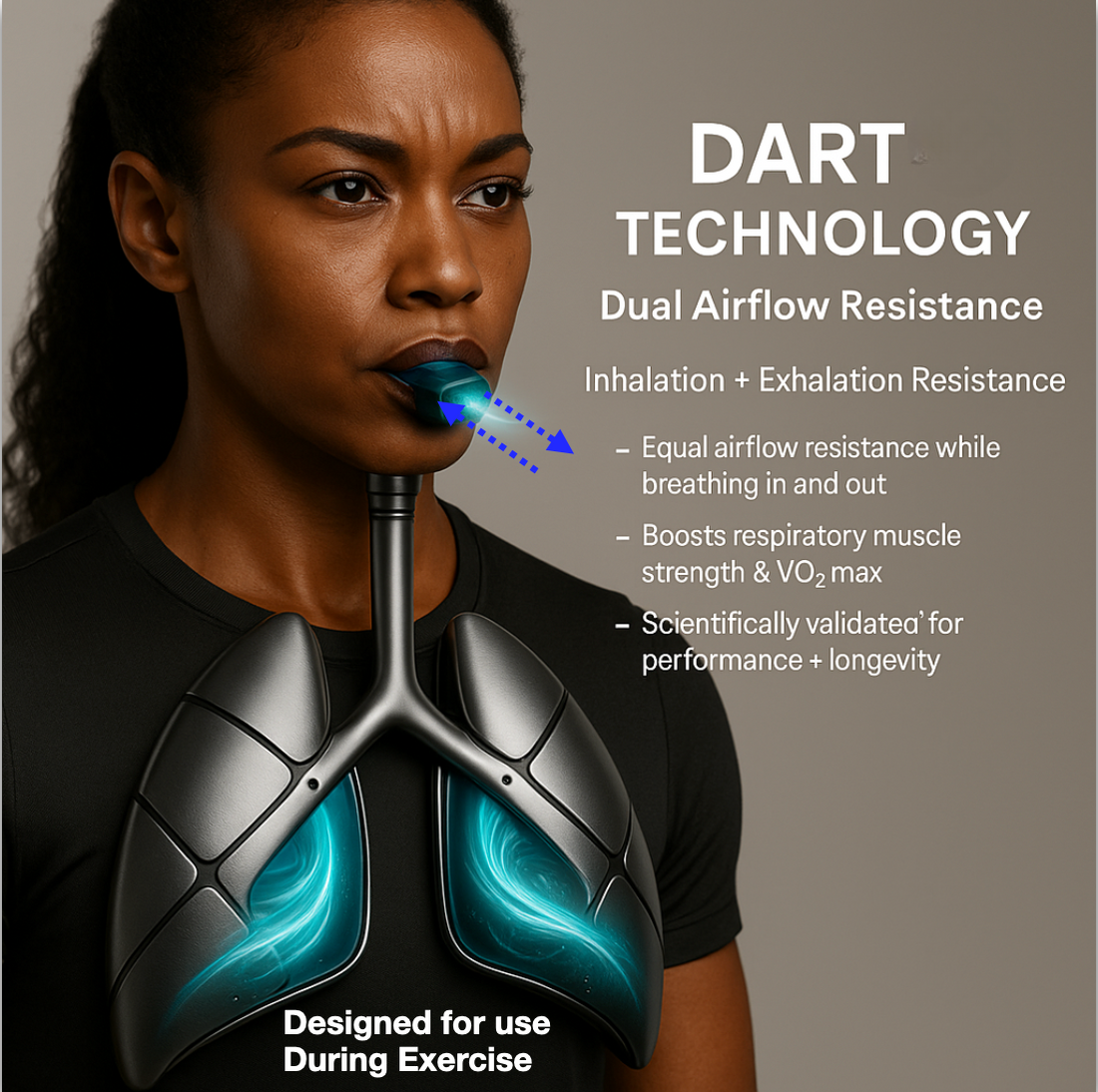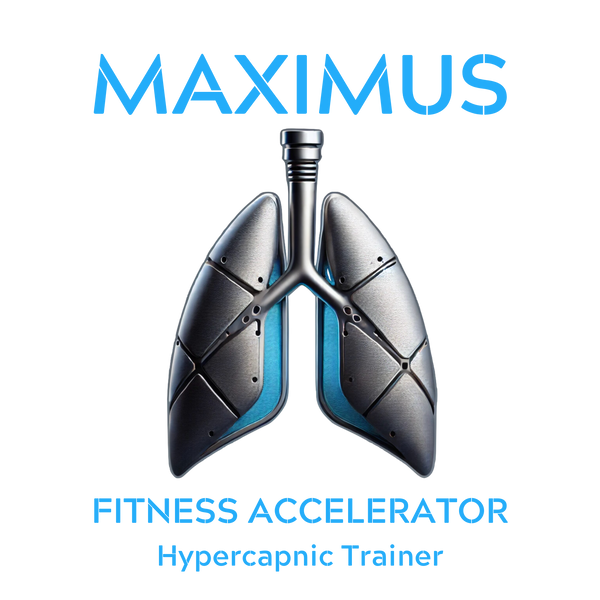
Respiratory Muscle Trainers for Improving Athletic Strength and Endurance
Share
Introduction
Respiratory muscle trainers (RMTs) are devices designed to enhance the strength and endurance of the respiratory muscles, primarily the diaphragm and intercostal muscles. They provide resistance during breathing exercises, increasing the workload on these muscles. Improved respiratory muscle function can lead to better oxygen uptake, delayed fatigue, and enhanced athletic performance, making RMTs valuable tools for athletes.
Types of Respiratory Muscle Trainers
- Inspiratory Muscle Trainers (IMTs) focus on the muscles involved in inhalation, strengthening the diaphragm and other inspiratory muscles.
- Expiratory Muscle Trainers (EMTs): These target the muscles used during exhalation, including the abdominal and internal intercostal muscles.
- Combined Trainers: Devices that provide resistance during inhalation and exhalation, targeting all respiratory muscles.
Mechanism of Action
RMTs provide resistance to breathing, forcing the respiratory muscles to exert more effort. This increased effort leads to muscle hypertrophy and improved endurance, similar to resistance training for skeletal muscles. Over time, this training can result in stronger respiratory muscles, improved lung capacity, and better overall respiratory efficiency.
Research Studies
- Study 1: Effects of Inspiratory Muscle Training on Endurance Athletes
- Authors: Romer, L.M., McConnell, A.K., & Jones, D.A.
- Publication: Medicine & Science in Sports & Exercise, 2002.
- Methodology: Twenty endurance athletes were divided into experimental and control groups. The experimental group underwent a 6-week inspiratory muscle training (IMT) program using an inspiratory muscle trainer.
- Results: The experimental group showed a significant increase in inspiratory muscle strength and reduced perceived respiratory effort during high-intensity exercise. Additionally, there were improvements in VO2 max and time to exhaustion, suggesting enhanced endurance.
- Study 2: Inspiratory Muscle Training Improves Cycling Performance
- Authors: Romer, L.M., McConnell, A.K.
- Publication: European Journal of Applied Physiology, 2004.
- Methodology: Sixteen competitive cyclists were randomized into IMT and placebo groups. The IMT group performed 30 breaths twice daily against a 50% maximal inspiratory pressure (MIP) resistance.
- Results: The IMT group demonstrated significant improvements in MIP, reduced inspiratory muscle fatigue, and improved cycling time trial performance compared to the placebo group.
- Study 3: The Effect of Respiratory Muscle Training on Intermittent Exercise Performance
- Authors: Tong, T.K., Fu, F.H., & Chung, P.K.
- Publication: Journal of Sports Science and Medicine, 2008.
- Methodology: Twenty-four male soccer players participated in a 12-week RMT program that included inspiratory and expiratory muscle training.
- Results: Participants showed significant improvements in shuttle run performance, VO2 max, and reduced lactate accumulation, indicating enhanced anaerobic threshold and endurance.
- Study 4: Influence of Respiratory Muscle Training on Rowing Performance
- Authors: Volianitis, S., McConnell, A.K., & Jones, D.A.
- Publication: Journal of Strength and Conditioning Research, 2001.
- Methodology: Fourteen trained rowers were divided into IMT and control groups. The IMT group performed 30 breaths twice daily at 50% MIP for six weeks.
- Results: The IMT group showed significant improvements in 6-minute maximal rowing distance, inspiratory muscle strength, and reduced perception of breathlessness during high-intensity rowing.
- Study 5: The Effect of Expiratory Muscle Training on Performance in Swimmers
- Authors: Sonetti, D.A., Wetter, T.J., & Pegelow, D.F.
- Publication: Medicine & Science in Sports & Exercise, 2001.
- Methodology: Ten competitive swimmers underwent an expiratory muscle training (EMT) program involving 30 breaths twice daily against 50% maximal expiratory pressure (MEP) for five weeks.
- Results: Significant improvements were observed in MEP, swim time in a 200-meter sprint, and reduced perception of breathlessness, indicating enhanced respiratory muscle strength and endurance.
- Study 6: Combined Inspiratory and Expiratory Muscle Training in Triathletes
- Authors: Brown, P.I., Sharpe, G.R., & Johnson, M.A.
- Publication: International Journal of Sports Medicine, 2012.
- Methodology: Thirty triathletes were divided into a combined RMT and control groups. The RMT group performed 30 breaths twice daily with resistance applied during inhalation and exhalation.
- Results: The combined RMT group showed improvements in inspiratory and expiratory muscle strength, VO2 max, and overall triathlon performance, indicating the effectiveness of combined respiratory muscle training.
Conclusions
Research consistently supports the use of respiratory muscle training to enhance athletic strength and endurance. Key benefits include increased respiratory muscle strength, improved endurance, reduced perceived exertion, and enhanced performance metrics such as VO2 max and time to exhaustion. Inspiratory and expiratory muscle training has positive effects, and combined inspiratory and expiratory training offers the most comprehensive benefits.
Future Directions
Future research should aim to:
- Investigate the long-term effects and sustainability of benefits from respiratory muscle training.
- Explore the impact of RMT on different types of athletes and sports.
- Determine the most effective training protocols, including duration, intensity, and frequency.
- Examine the underlying physiological mechanisms contributing to performance improvements.
By continuing to explore these areas, the full potential of respiratory muscle training in enhancing athletic performance can be better understood and optimized.
